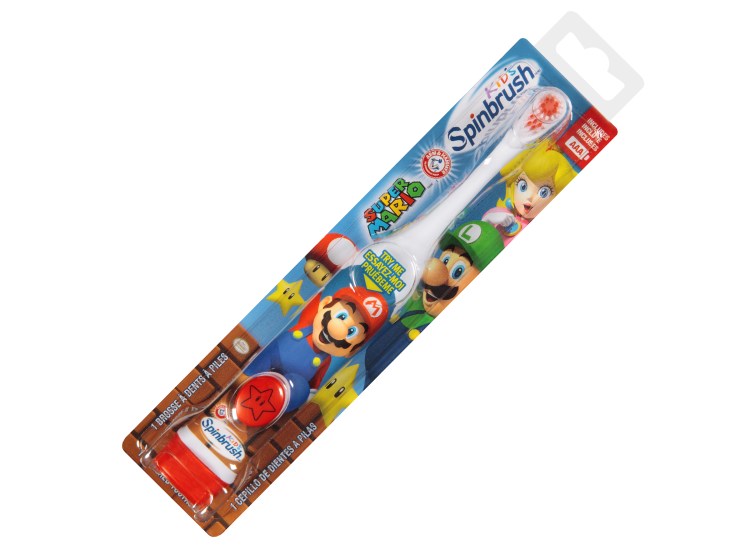Fewer children are getting their first introduction to video games through Nintendo devices, and the publisher is turning to some interesting alternatives to fight that trend.
Nintendo is preparing to release its first smartphone app next month as part of a major effort to increase its revenues and keep its properties in front of a wider audience, and those are the same reasons the company wants its characters on household items like electric toothbrushes. In a question-and-answer session with investors, Nintendo president Tatsumi Kimishima explained that one of his goals is to expand its licensing deals with other products in an effort to raise the profile of characters like Mario and Princess Peach among consumers. Previously, the company could rely on parents to introduce Nintendo properties as a child’s first gaming experience. But with more kids getting tablets and hand-me-down smartphones as their first game devices, Nintendo must modify this strategy.
And that’s why the company loves putting Mario on toothbrushes.
“Due to changes in our industry, the proportion of young consumers who are first experiencing games on our systems has been falling,” said Kimishima. “We want to have everyone become familiar with our [properties] by reaching as many people as possible from an early age within their daily lives.”
This is why Nintendo’s executive team has spoken so frequently about making new licensing deals. It has seen the power of its Amiibo toys, and it realizes that those deals are not just about generating extra revenue. Physical goods are an easy way for a consumer — specifically young kids — to see Mario and Bowser every day. This could help them build a strong connection that could lead them into people who buy and play Nintendo’s core products. So while Nintendo characters are already on T-shirts, backpacks, and the aforementioned toothbrushes — and this contributes to the $8.3 million in revenue the company made over the last nine months from its non-gaming businesses — it is thinking about ways to do even more of that.
“In America, many children are using electric toothbrushes featuring Mario characters to brush their teeth every day,” Kimishima explained. “We have also worked with a shoe company to launch shoes that feature the designs of Nintendo game systems. As you know, we are also working on a theme park featuring Nintendo [properties]. Our policy and the focus of our current activities is to create more chances for our consumers to experience the charm of Nintendo [properties], not just on our dedicated video game systems, but outside of game software as well.”
This is a strategy we’ve seen major corporations like The Walt Disney Company use for years. That company’s Marvel and Star Wars brands are everywhere you look. You can almost live exclusively off products that feature pictures of Darth Vader on them, and then maybe that’ll convince you to go check out the upcoming Star Wars section of Disney’s theme parks between the release of the films.
Nintendo wants to integrate into its consumers’ lives between game purchases in the exact same way.
“Our long-term strategy is to spark our consumers’ interest in playing Nintendo game systems and encouraging continued growth of our games business,” said Kimishima.
VentureBeat's mission is to be a digital town square for technical decision-makers to gain knowledge about transformative enterprise technology and transact. Learn More

